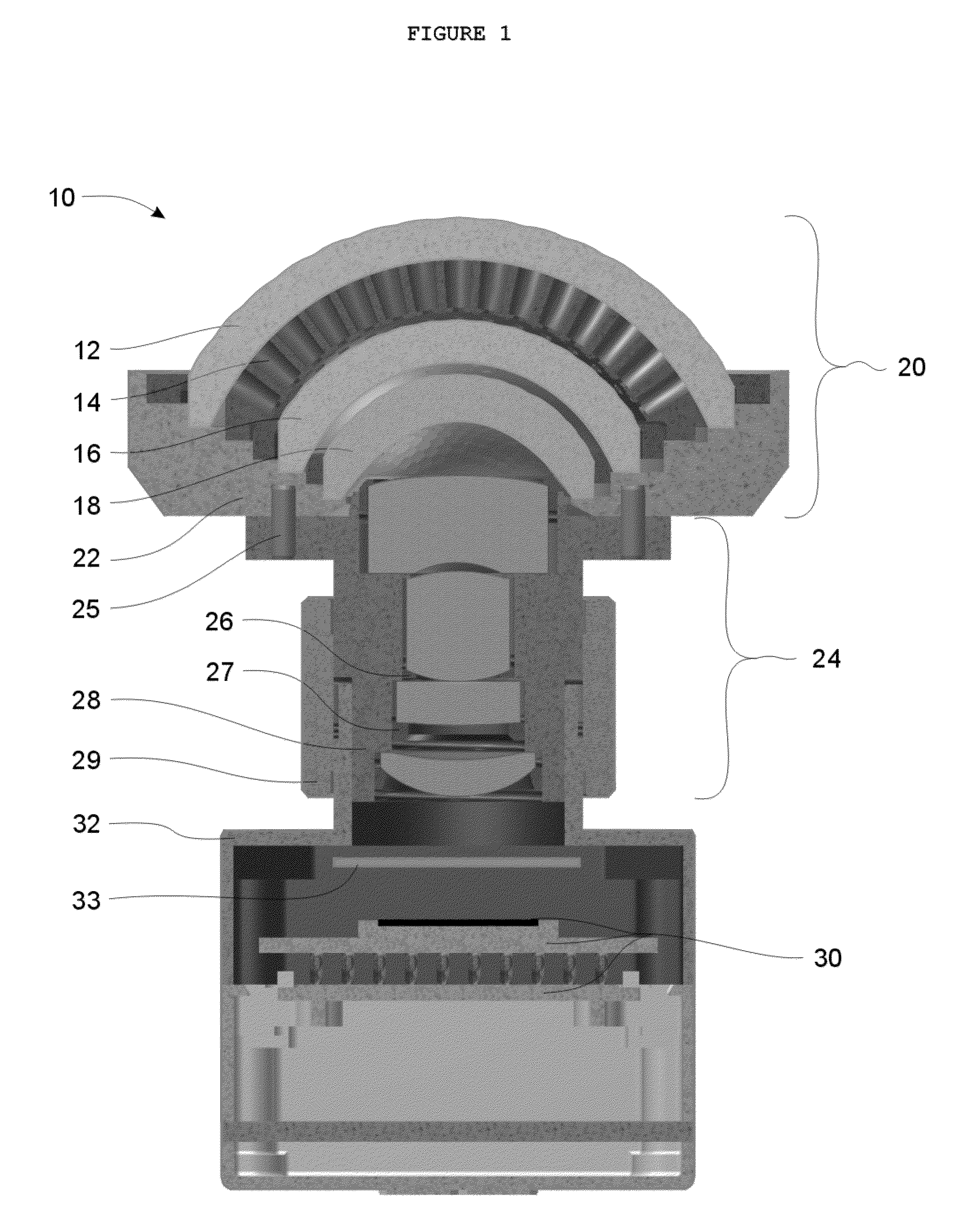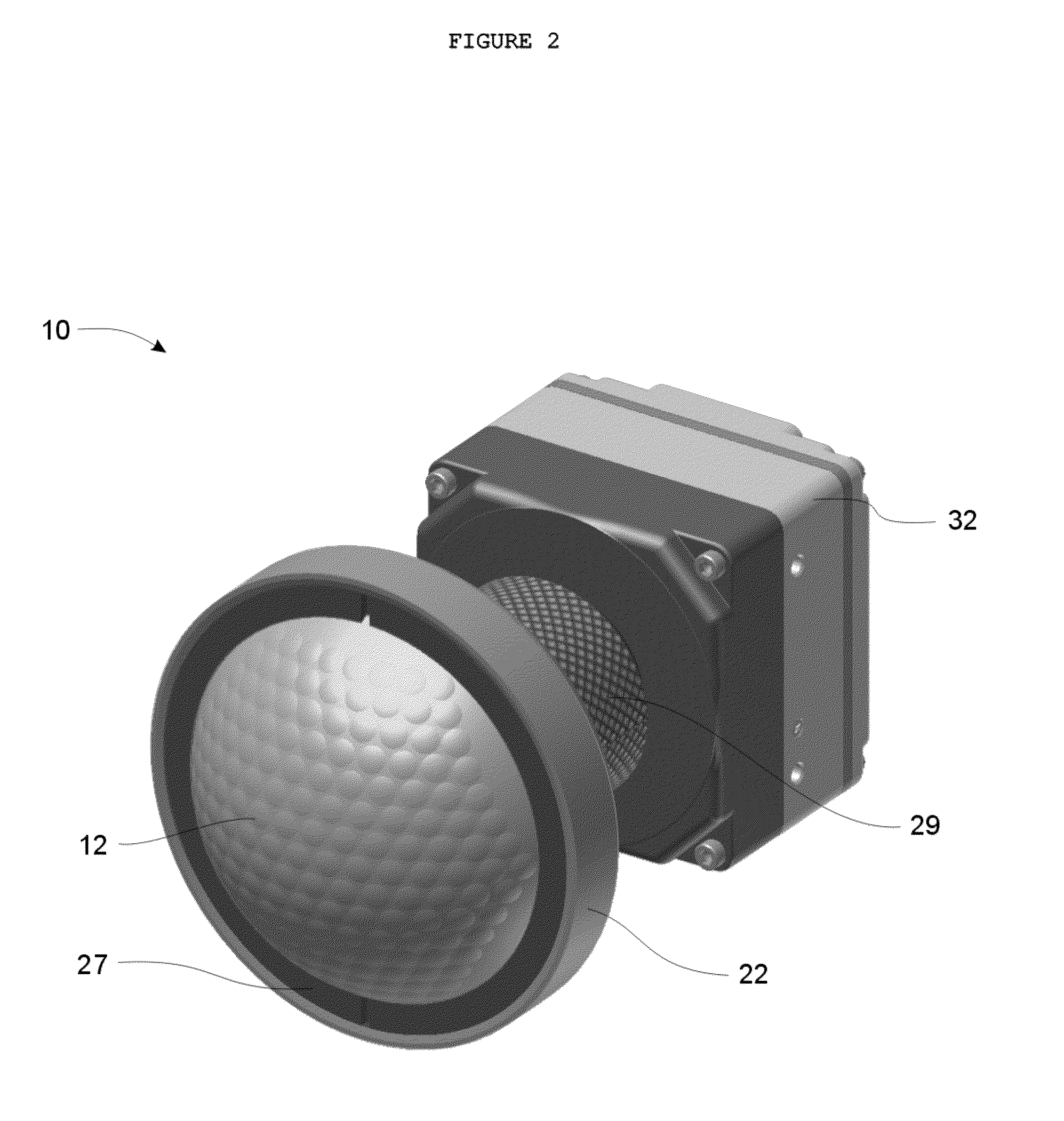Multihybrid Artificial Compound Eye with Varied Ommatidia
- Summary
- Abstract
- Description
- Claims
- Application Information
AI Technical Summary
Benefits of technology
Problems solved by technology
Method used
Image
Examples
Embodiment Construction
[0068]Referring now to the drawings, FIG. 1 is a cross-sectional view of a multihybrid artificial compound eye 10 constructed in accordance with one embodiment of the invention, and FIG. 2 is a front perspective view of the same system. The optics are divided into a hybrid superposition-apposition compound array fore-optic 20 and a rear-optic relay 24. The fore-optic includes an objective lenslet superposition array 12, a louver baffle 14, a field lenslet superposition array 16, and an erector lenslet apposition array, 18, all held rigidly in alignment by a fore-optic mounting structure 22. Each lenslet array is shaped conformally to a positive meniscus base with curvatures that are concentric. Each positive meniscus base is held in place by a retaining ring 27.
[0069]The rear-optic includes several conventional lens elements and an aperture stop that can be an iris 26, all held rigidly in alignment by a rear-optic mounting structure 28. Each lens element is held in place by a retain...
PUM
 Login to View More
Login to View More Abstract
Description
Claims
Application Information
 Login to View More
Login to View More - R&D
- Intellectual Property
- Life Sciences
- Materials
- Tech Scout
- Unparalleled Data Quality
- Higher Quality Content
- 60% Fewer Hallucinations
Browse by: Latest US Patents, China's latest patents, Technical Efficacy Thesaurus, Application Domain, Technology Topic, Popular Technical Reports.
© 2025 PatSnap. All rights reserved.Legal|Privacy policy|Modern Slavery Act Transparency Statement|Sitemap|About US| Contact US: help@patsnap.com



